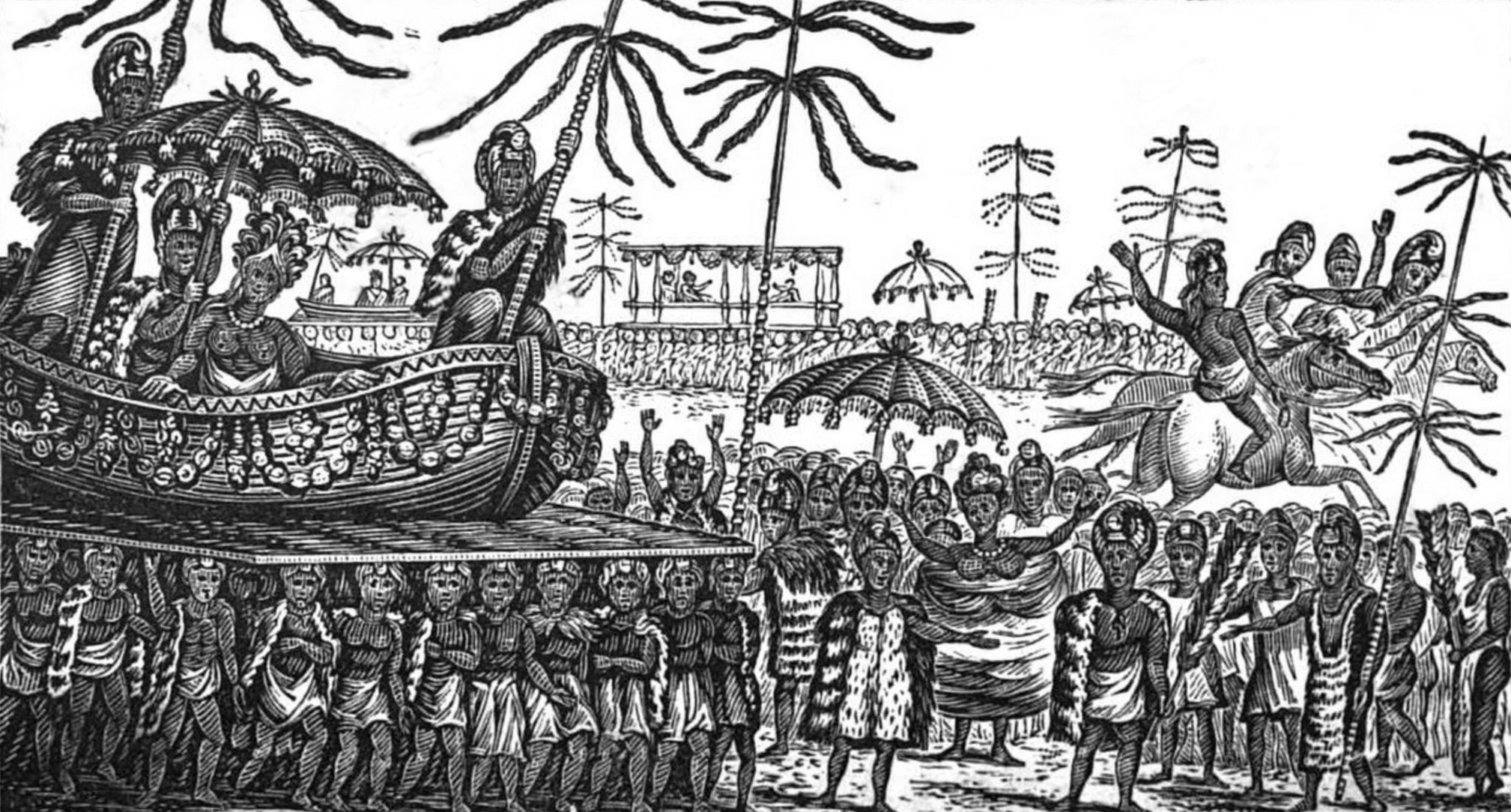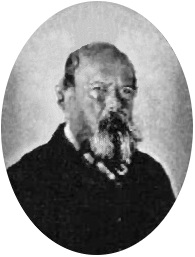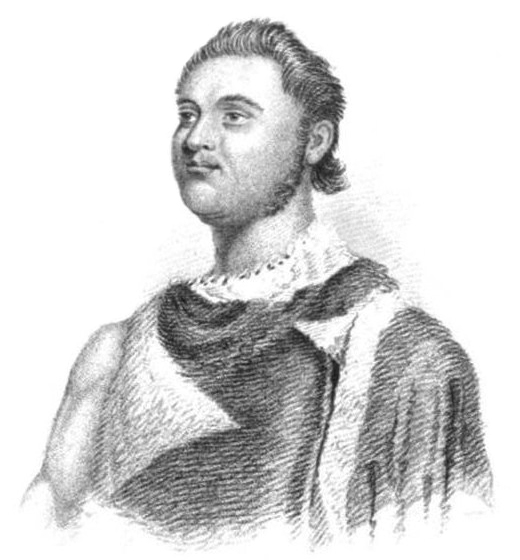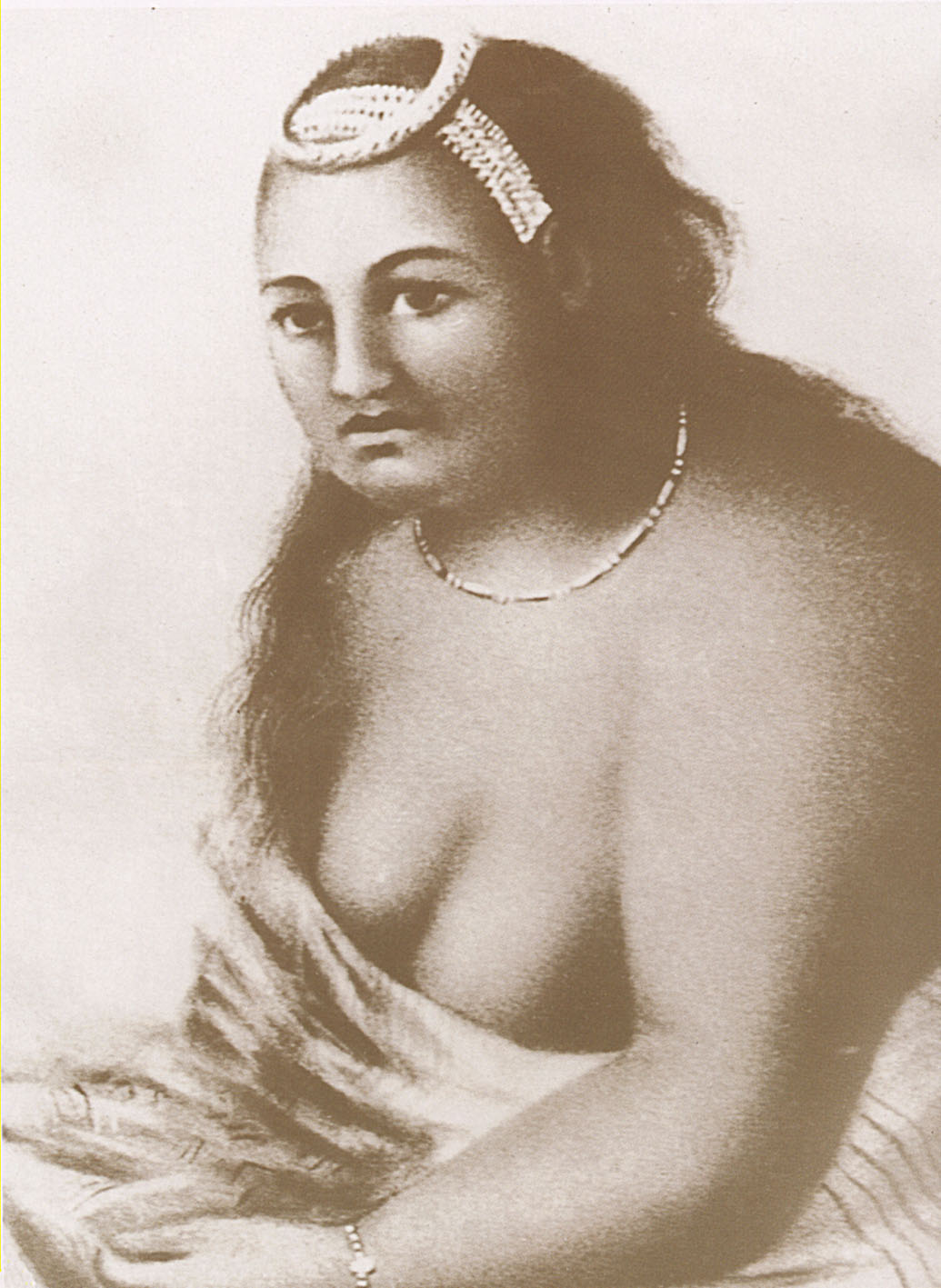|
John William Pitt Kinau
John William Pitt Kīnaʻu (December 21/27, 1842 – September 9, 1859) was a prince of the Kingdom of Hawaii and the only surviving son of High Chief William Pitt Leleiohoku I and Ruth Keʻelikōlani. As a descendant of King Kamehameha I, he was chosen to attend the Chiefs' Children's School (later renamed Royal School) taught by the American missionary Amos Starr Cooke and his wife, Juliette Montague Cooke, alongside fifteen of his royal cousins. At a young age, he inherited the landholdings of his father and his adoptive grandfather including Huliheʻe Palace, but the prince died under mysterious circumstances before his seventeenth birthday. Early life and family Kīnaʻu was born December 21/27, 1842, Honolulu, on the island of Oahu. His father was High Chief William Pitt Leleiohoku I (1821–1848) and his mother was High Ruth Keʻelikōlani (1826–1883). Through his mother he was Kamehameha I's great-great-grandchild. His mother's parentage was disputed, but she was ... [...More Info...] [...Related Items...] OR: [Wikipedia] [Google] [Baidu] |
House Of Kamehameha
The House of Kamehameha ''(Hale O Kamehameha)'', or the Kamehameha dynasty, was the reigning Royal Family of the Kingdom of Hawaii, beginning with its founding by Kamehameha I in 1795 and ending with the death of Kamehameha V in 1872 and Lunalilo in 1874. The kingdom continued for another 21 years, until its overthrow in 1893 with the fall of the House of Kalakaua. Origins of the Kamehameha dynasty Originating lines The origins of the House of Kamehameha stems from the progenitor, Keōua Kalanikupuapa`ikalaninui who was the sacred father of Kamehameha I and by the royal court of his brother Kalaniʻōpuʻu who later became king and gave his war god Kuka'ilimoku to Kamehameha I and he became the king by conquest, uniting all the Hawaiian islands into one kingdom under his undivided rule. Kalaniʻōpuʻu's father was Kalaninuiʻīamamao and Keōua's father was Kalanikeʻeaumoku, both were sons of Keaweʻīkekahialiʻiokamoku. They shared a common mother, Kamakaʻīmoku. Both ... [...More Info...] [...Related Items...] OR: [Wikipedia] [Google] [Baidu] |
Kalanipauahi
Pauahi (c.1804–1826) was a member of the royal family of the Kingdom of Hawaii in the House of Kamehameha. Referred as Pauahi in her lifetime, she is often referred to as Kalanipauahi or Kalani Pauahi to differentiate her from her niece and namesake Bernice Pauahi Bishop. Life Pauahi was born circa 1804. Her mother was Keouawahine, daughter of Kauhiwawaeono of Maui by his wife, chiefess Loe-wahine, who in turn was daughter of Kameeiamoku. Her father was the High Chief Pauli Kaʻōleiokū (1767–1818). The name ''Pauahi'' originated in an incident which occurred in her childhood. By an accidental explosion of gunpowder she narrowly escaped being burned to death. Five men were killed in the catastrophe, her mother house was burned to the ground, and she was badly injured. In commemorating her escape she was given the name Pauahi, which is composed of two Hawaiian words, ''pau'', "finished", or "completed" and ''ahi'', "fire", which, when translated, means "the fire is out". ... [...More Info...] [...Related Items...] OR: [Wikipedia] [Google] [Baidu] |
Isaac Davis (Hawaii)
Isaac Davis (c. 1758–1810) was a Welsh advisor to Kamehameha I, who recruited him to help conquer the other kingdoms in Hawaii, resulting in formation of the Kingdom of Hawaii. He arrived in Hawaii in 1790 as the sole survivor of the massacre of the crew of the . Davis and John Young became friends and advisors to Kamehameha. Davis brought western military knowledge to Hawaii and played a prominent role during Hawaii's first contacts with the European powers. He spent the rest of his life in Hawaii and was known as Aikake. Life Isaac Davis was born about 1758 in Milford Haven, Wales. He was a seaman on the American schooner ''Fair American'', commanded by Thomas Humphrey Metcalfe, engaged with a larger companionship, the ''Eleanora'', in the maritime fur trade between the Pacific Northwest and China. In 1790, the ''Eleanora'' was under Captain Simon Metcalfe, when one of his skiffs was stolen by chief Kaōpūiki at Honuaula on Maui. Metcalfe nevertheless invited the loca ... [...More Info...] [...Related Items...] OR: [Wikipedia] [Google] [Baidu] |
Lucy Kaopaulu Peabody
Lucy Kaopaulu Peabody (January 1, 1840 – August 9, 1928) was a high chiefess and courtier of the Kingdom of Hawaii. She served as a maid of honour and lady-in-waiting to Queen Emma of Hawaii. In 1905, she founded the reestablished Kaʻahumanu Society, a female-led civic society initially chartered during the Hawaiian monarchy. Early life and family Peabody was born on January 1, 1840, at Luaʻehu, Lahaina, on the island of Maui, the daughter of Dr. Parker Peabody (1805–1849) and Elizabeth Kamakaila Davis. During her early childhood. she resided with her maternal grandparents at Waimea and Kawaihae, on the island of Hawaii. She was of mixed Native Hawaiian, American, and Welsh descent, known as '' hapa-haole'' in Hawaiian. Her father was an American physician from New York who established a short-lived partnership with English physician Thomas Charles Byde Rooke, the uncle and ''hānai'' (adoptive) father of the future Queen Emma of Hawaii. Emma and Lucy were both also d ... [...More Info...] [...Related Items...] OR: [Wikipedia] [Google] [Baidu] |
Governors Of Hawaii (island)
The Governor of Hawaii Island ( haw, Kiaaina o na Mokupuni o Hawaii) was the Governor, royal governor or viceroy of the Hawaii (island), Island of Hawaii during the Hawaiian Kingdom, Kingdom of Hawaii. The Governor of Hawaii was usually a Hawaiian chief or prince and could even be a woman. There were no restriction of women in government in the House of Nobles or Governorship of the islands. The Governor had authority over the island of Hawaii, the biggest island in the kingdom, and it was up to the governor to appoint lieutenant governors to assisted them. The governor had replaced the old Aliʻis of the islands, but sovereignty remained with the king. The island governors were under the jurisdiction of the Ministry of the Interior (Hawaii), Ministers of the Interiors. Role The 1840 Constitution of the Hawaiian Kingdom, 1840 Constitution of the Kingdom of Hawaii states: Abolition After King Kalākaua was forced to sign the 1887 Constitution of the Hawaiian Kingdom, Bayonet Con ... [...More Info...] [...Related Items...] OR: [Wikipedia] [Google] [Baidu] |
Kuakini
John Adams Kiiapalaoku Kuakini (1789–1844) was an important adviser to Kamehameha I in the early stages of the Kingdom of Hawaii. He was responsible for contributing to the infrastructure among other changes in the Kona District during this era. Family life He was born about 1789 with the name ''Kaluaikonahale''. His father was Keʻeaumoku Pāpaiahiahi, an alii (noble) from the island of Hawaii, and his mother was NāmāhānaiKaleleokalani, the widow queen and half-sister of the late king of Maui, Kamehameha Nui. Historian Samuel Kamakau later makes the contradictory claim that Kaʻiana was Kuakini's father and also claimed he was a ''poʻolua'' child (possessing two head or father). Keʻeaumoku became a fugitive from King Kahekili II of Maui. Escaping to Hana, the family moved back to Hawaii island and lived on Kahaluu Bay. He was the youngest of four important siblings: sisters Queen Kaahumanu, Kamehameha's favorite wife and later became the powerful Kuhina nui, Kalākua ... [...More Info...] [...Related Items...] OR: [Wikipedia] [Google] [Baidu] |
Kīnaʻu
Princess Kalani Ahumanu i Kaliko o Iwi Kauhipua o Kīnau, also known as Elizabeth Kīnau ( – April 4, 1839) was Kuhina Nui of the Kingdom of Hawaii as Kaahumanu II, Queen regent and Dowager Queen. Life Her father was King Kamehameha I and her mother was Kalākua Kaheiheimālie. She was born probably in 1805 on the island of Oahu at Waikiki. She was given in ''hānai'' to her stepmother Peleuli and her second husband Kawelookalani, her father's half-brother. Peleuli named her Kīnau after her son Kahōanokū Kīnau (her half-brother) and took her back to the island of Hawaii after Kamehameha moved his capital back to Kailua-Kona. Kīnau was first married to her half-brother Liholiho (1797–1824) who ascended in 1819 as King Kamehameha II. In 1824, at around 19 years of age, she became Dowager Queen when Kamehameha II died in London with his favorite wife (her sister) Queen Kamāmalu. Her second husband was Kahalaia Luanuu, a grandson of Kamehameha I. She had a son who peri ... [...More Info...] [...Related Items...] OR: [Wikipedia] [Google] [Baidu] |
Kuhina Nui
Kuhina Nui was a powerful office in the Kingdom of Hawaii from 1819 to 1864. It was usually held by a relative of the king and was the rough equivalent of the 19th-century European office of Prime Minister or sometimes Regent. Origin of the office Before the establishment of the office of ''Kuhina Nui'' by Kamehameha, there was a position called Kālaimoku ("kālai" meaning "to carve" and "moku" being an island). This was an ancient office from the very dawn of Hawaiian civilization. During this time before the ''Kuhina Nui'' Kalanimoku, a trusted chief of Kamehameha, was the Kālaimoku until Kamehameha established the office of the ''Kuhina Nui''. When King Kamehameha II assumed the throne in 1819, his father's favorite wife, Queen Kaʻahumanu, told him Kamehameha I had wished for her to rule the kingdom alongside him. Whether this was really the will of Kamehameha I is a matter of debate. In either case, Kamehameha II did not object and the office of ''Kuhina Nui'' was created f ... [...More Info...] [...Related Items...] OR: [Wikipedia] [Google] [Baidu] |
Hawaiian Language
Hawaiian (', ) is a Polynesian language of the Austronesian language family that takes its name from Hawaii, the largest island in the tropical North Pacific archipelago where it developed. Hawaiian, along with English, is an official language of the US state of Hawaii. King Kamehameha III established the first Hawaiian-language constitution in 1839 and 1840. For various reasons, including territorial legislation establishing English as the official language in schools, the number of native speakers of Hawaiian gradually decreased during the period from the 1830s to the 1950s. Hawaiian was essentially displaced by English on six of seven inhabited islands. In 2001, native speakers of Hawaiian amounted to less than 0.1% of the statewide population. Linguists were unsure if Hawaiian and other endangered languages would survive. Nevertheless, from around 1949 to the present day, there has been a gradual increase in attention to and promotion of the language. Public Hawaiian-langua ... [...More Info...] [...Related Items...] OR: [Wikipedia] [Google] [Baidu] |
William Pitt The Younger
William Pitt the Younger (28 May 175923 January 1806) was a British statesman, the youngest and last prime minister of Great Britain (before the Acts of Union 1800) and then first prime minister of the United Kingdom (of Great Britain and Ireland) as of January 1801. He left office in March 1801, but served as prime minister again from 1804 until his death in 1806. He was also Chancellor of the Exchequer for all of his time as prime minister. He is known as "Pitt the Younger" to distinguish him from his father, William Pitt, 1st Earl of Chatham, who had previously served as prime minister and is referred to as "William Pitt the Elder" (or "Chatham" by historians). Pitt's prime ministerial tenure, which came during the reign of King George III, was dominated by major political events in Europe, including the French Revolution and the Napoleonic Wars. Pitt, although often referred to as a Tory, or "new Tory", called himself an "independent Whig" and was generally opposed to the ... [...More Info...] [...Related Items...] OR: [Wikipedia] [Google] [Baidu] |
Kalanimoku
William Pitt Kalanimoku or Kalaimoku ( – February 7, 1827) was a High Chief who functioned similarly to a prime minister of the Hawaiian Kingdom during the reigns of Kamehameha I, Kamehameha II and the beginning of the reign of Kamehameha III. He was called The Iron Cable of Hawaii because of his abilities. Life Kalanimoku was born at Kauiki, Maui, circa 1768. His father was Kekuamanoha and his mother was Kamakahukilani, the niece of his father. Through his father he was a grandson of Kekaulike, the King or Moi of Maui. Through his mother he was great-grandson of Kekaulike. He was cousin of Kaahumanu, Kaheiheimālie, and Namahana Piia, Kamehameha's three wives; Kuakini, later served as Governor of Hawaii; and Keeaumoku II, later served as Governor of Maui. His siblings included Boki, later served as Governor of Oahu; Kahakuhaakoi Wahinepio, later served as Governor of Maui, and Manono II, the wife of Keaoua Kekuaokalani. Both his sisters were at one time wives of Kameh ... [...More Info...] [...Related Items...] OR: [Wikipedia] [Google] [Baidu] |
.jpg)




.jpg)


